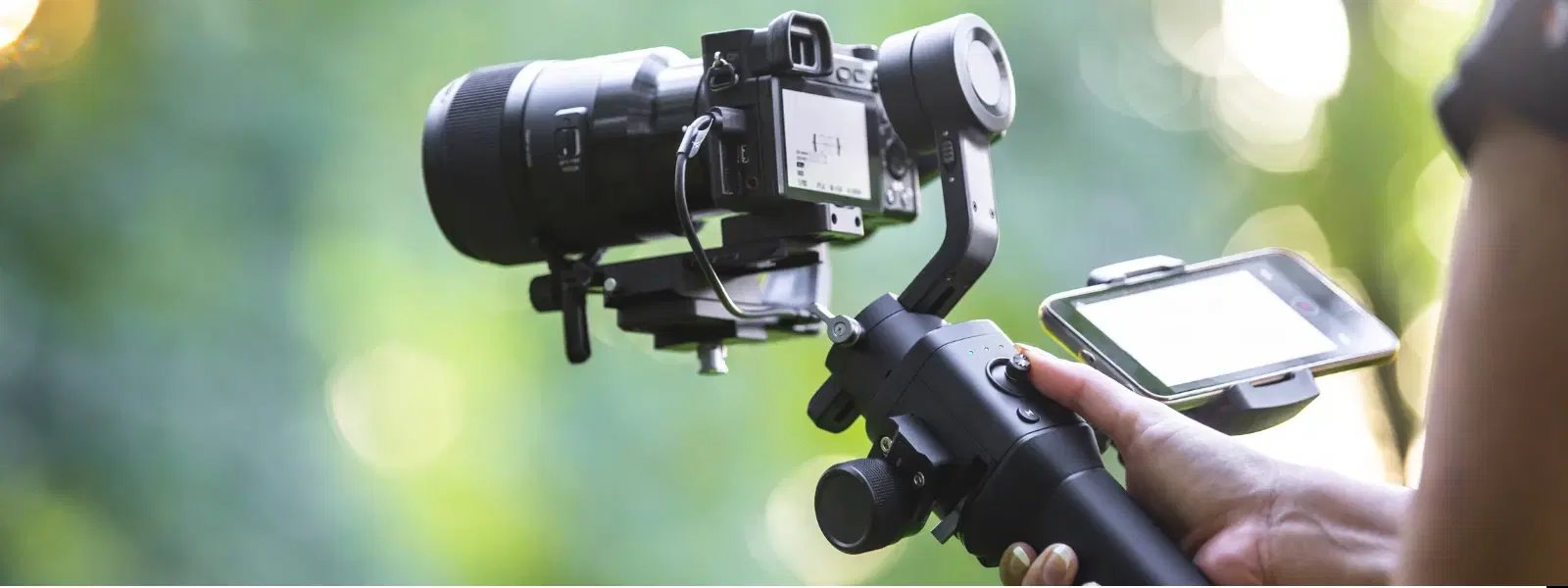
Consumer Electronics
•04 min read
(15)-937aaf4b-b214-4ac3-a81c-a828a88960b9.png&w=3840&q=75)
Gimbals for camera and phone have transformed the way we capture moments, delivering smooth, cinematic footage even on the move. Whether you are an avid photographer, a budding filmmaker, or simply someone who loves to record daily adventures, this guide explores everything you need to know about gimbals, their types, and how to effectively use and maintain them.
A gimbal is a device designed to stabilize your camera or smartphone, making it an indispensable accessory in videography. A camera gimbal works by using motors and sensors to counteract unwanted movements, ensuring your shots remain steady. By contrast, a phone gimbal is tailored to support smartphones, offering a compact, user-friendly option for anyone looking to enhance video quality. The core of these devices is the 3-axis gimbal mechanism that provides unparalleled stability, even during rapid movements.
When choosing between a camera gimbal and a smartphone gimbal, it is crucial to consider your specific requirements. A camera gimbal is designed to handle heavier DSLRs or mirrorless cameras and typically offers advanced adjustment features for professional shooting. In contrast, a phone gimbal is more accessible, offering a lightweight and portable option without compromising on stability. Both types, as a category of gimbal stabilizer, are engineered to provide smooth footage and a professional finish.
Handheld gimbals are popular for their ease of use and portability. Ideal for vlogging, travel videos, and capturing dynamic action scenes, these devices let you record stunning content from any location. Their design ensures that even if you are on the move, your video gimbal keeps the shot smooth and stable.
For those who relish adventure, action camera gimbals are specifically built to complement compact, rugged cameras. These gimbals not only secure your device but also enhance rugged shooting conditions, taking your action footage to new artistic heights. They are built to withstand high-movement activities while delivering quality stabilization.
Pro Tip from Tata Neu: Using a gimbal can significantly enhance the quality of your videos by eliminating shaky footage, making your content look professional even if you’re just starting out.
(14)-e040417b-ae03-474d-80a9-a83ec2362672.png&w=3840&q=75)
Selecting the best gimbal for camera and phone requires careful consideration of several factors. Firstly, assess the weight of your device. A dslr gimbal may need to support heavier cameras, while a smartphone gimbal is optimized for lighter devices. Battery life, compatibility, and price are other critical aspects. For instance, a 3-axis gimbal offers reliable balance across various shooting conditions, which is particularly beneficial if you often film dynamic scenes.
Additionally, whether you are looking for a video gimbal for vlogging, an action camera gimbal for adventurous shoots, or a handheld gimbal for everyday scenarios, you should shop with trusted platforms that offer expert guidance, fast delivery, and special NeuCoin rewards on every purchase. With the convenience of express delivery, many orders placed before 6 PM are ensured to be delivered promptly, adding an extra layer of convenience to your shopping experience.
Before you start filming, setting up your gimbal correctly is key. Begin by assembling the device and mounting your camera or smartphone securely. It is essential to balance your equipment carefully to achieve optimal stability. Once your gimbal is balanced, follow the provided tutorials to familiarise yourself with the controls and features.
To get the most out of your gimbal, practise various filming techniques. Mastering panning, tilting, and tracking shots will help you capture dynamic and smooth footage. Remember, the goal is to maintain a steady frame even when moving. Small adjustments and continuous practice can greatly enhance the cinematic quality of your videos.
Taking care of your gimbal ensures long-term performance. Regular checks and cleaning of the device are essential. You should always store your gimbal in a clean, dry place to avoid dust and moisture. A scheduled inspection of mechanical parts, battery health, and motor performance will save you from unexpected issues while on the go.
If you encounter problems such as erratic movements or connectivity issues, refer to the troubleshooting section in your user manual. Simple fixes like recalibrating the gimbal or updating the firmware can resolve many issues. Should the problem persist, consider seeking professional help to identify and fix the root cause.
(16)-b4b39a44-edf8-416a-b384-6e381a6aa60a.png&w=3840&q=75)
For beginners, a lightweight and easy-to-use gimbal designed for smartphones or entry-level cameras is recommended. These models typically offer intuitive controls and sufficient stability for capturing clear, smooth footage.
Most smartphone gimbals are compatible with a wide range of devices. However, it is advisable to check the specific compatibility list for your model to ensure a perfect fit.
Battery life can vary depending on the model, but most gimbals provide between 8 to 12 hours of continuous use on a full charge.
While not absolutely essential, using a gimbal with an action camera greatly improves video stability, particularly during high-movement or extreme shooting scenarios.
Most users find that with a little practice and by following the provided guides, using a gimbal becomes straightforward and highly rewarding.
In summary, a gimbal for camera and phone is an excellent investment for anyone looking to elevate the quality of their video content. Understanding the different types—whether it’s a camera gimbal, phone gimbal, or handheld gimbal—enables you to make an informed decision tailored to your creative needs. From initial setup and shooting techniques to regular maintenance tips, each step ensures your footage remains smooth and professional. At Tata Neu, enjoy the benefits of special NeuCoin rewards, expert guidance, and the reliability of express delivery services, making every purchase a seamless experience.